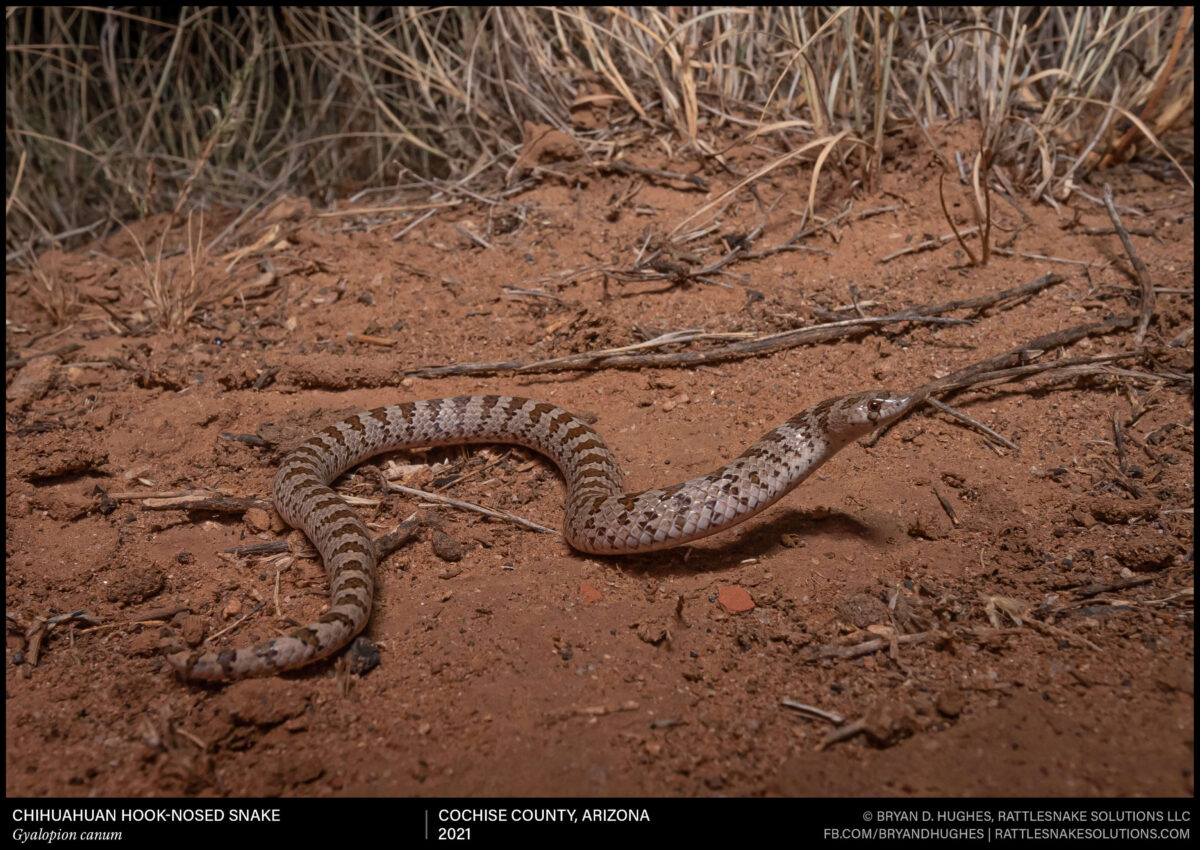A Chihuahuan Hooknosed Snake we found in Cochise County, Arizona. These small snakes have a specialized scale on its face that it can use to help it uncover its prey: arachnids and centipedes. Of the snakes that can be found in Arizona, this is one of the least often seen, even by snake enthusiasts.
This one became defensive as it was being photographed, striking repeatedly at the camera with a closed mouth. This is a good example of why the popular saying “if it has a mouth, it can bite” is missing a critical component to be relevant: not just can it bite, but WILL it bite. This little snake says no.










